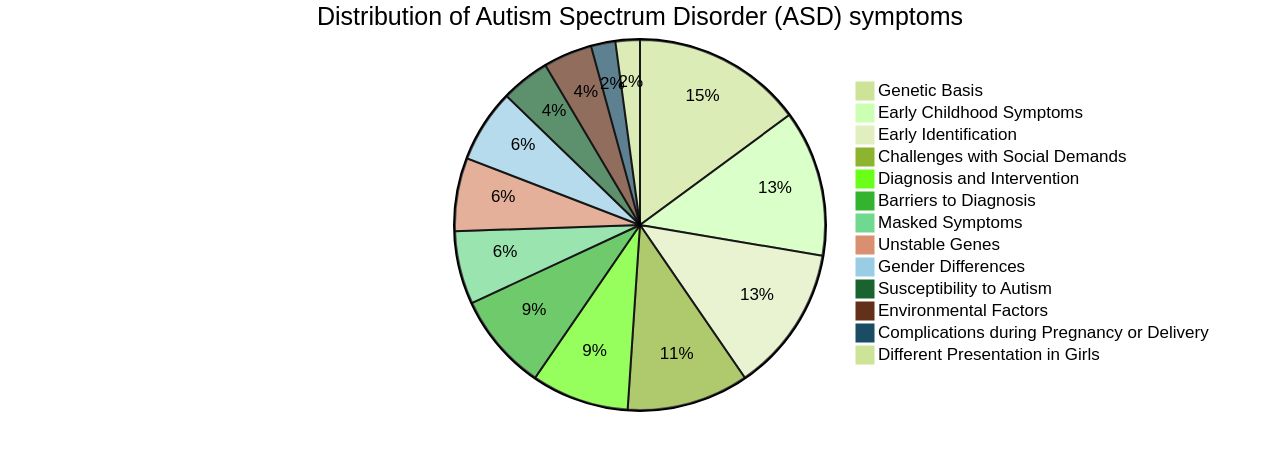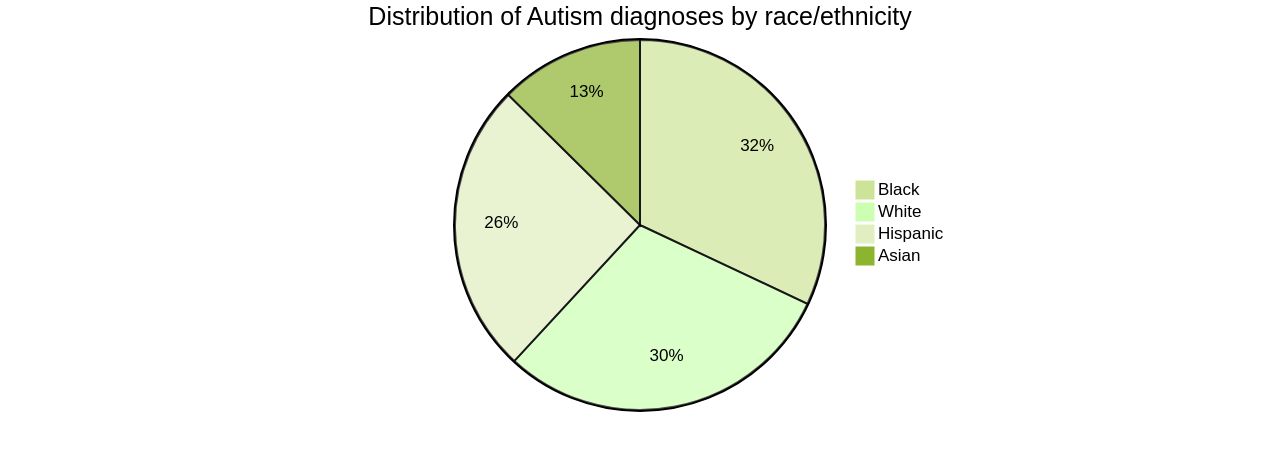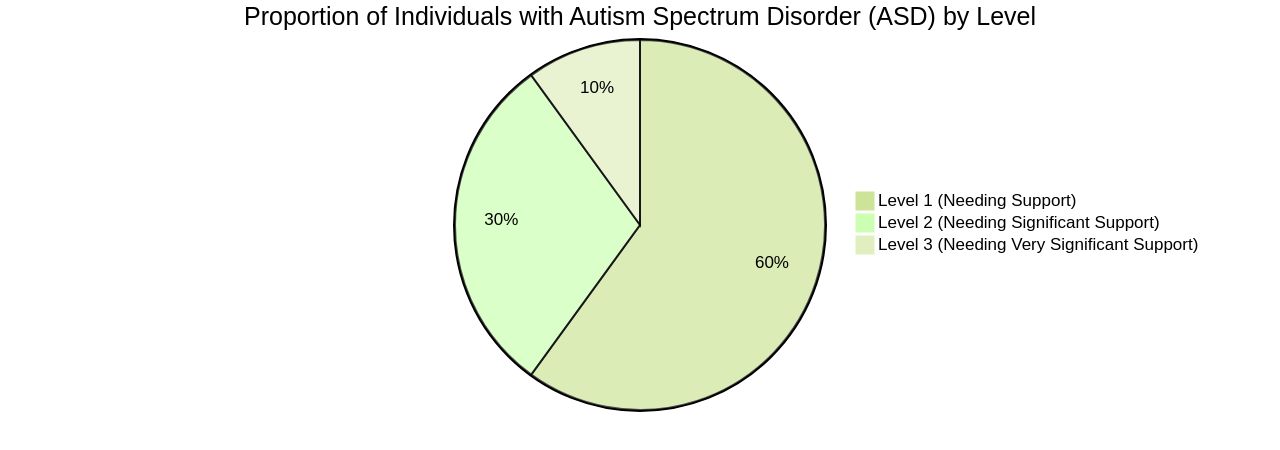Introduction
Autism Spectrum Disorder (ASD) is a complex neurological condition that affects an individual's ability to communicate, socially interact, and behave. Its impact varies across individuals, manifesting in different strengths and challenges, and continues throughout their life.
In this article, we will explore the prevalence and diagnosis of ASD, the levels of autism and their symptoms, early signs of ASD in childhood, and the diagnostic criteria for Autism Spectrum Disorder. Understanding these aspects will help parents and advocates navigate the challenges of ASD and ensure the well-being of their children.
Understanding Autism Spectrum Disorder (ASD)
Autism Spectrum Disorder (ASD) is a complex neurological condition that affects an individual's ability to communicate, socially interact, and behave. Its impact varies across individuals, manifesting in different strengths and challenges, and continues throughout their life.
It's crucial to debunk the misconception that ASD is a mental health disorder. Instead, it's a neurological disorder with a range of symptoms that differ in severity.
ASD characteristically appears by age 3, but symptoms may not fully manifest until social demands exceed the person’s capacity to cope with them. For instance, major life changes such as transitioning in and out of college, job switches, or changes in family status can result in a change in these symptoms.
Moreover, some adults who may be on the spectrum may not recognize their symptoms as signs of autism, particularly those with high-functioning autism who have managed to mask or hide their autistic traits. Today, ASD affects 1 in 36 children, a significant increase from 1 in 44 just two years ago.
This rise in prevalence has been attributed to factors such as broadening diagnostic criteria, heightened awareness, screening efforts, and genetic and environmental factors. It's important to note that males are approximately four times more likely to be diagnosed with ASD than females. ASD's impact on an individual's life can be profound, particularly in the field of education. In 2015, an estimated 85% of children and young people with autism reported difficulty at school, with more than 1 in 4 attending a special school. Therefore, it's crucial to foster an environment of understanding and acceptance, promoting awareness, and providing training and support for professionals working with individuals on the spectrum.

Prevalence and Diagnosis of Autism Spectrum Disorder
Autism Spectrum Disorder (ASD) is a persistent developmental condition that affects countless individuals across the globe. The Centers for Disease Control and Prevention (CDC) reported in 2023 that the prevalence of Autism had surged to 1 in every 36, a stark contrast to the 2004 rate of 1 in 125.
This implies that early detection and intervention are more critical than ever, given the rising prevalence of the disorder. The diagnosis process for ASD involves a thorough evaluation of an individual's behavior, social interactions, and communication skills, with an emphasis on early detection for the provision of timely and appropriate support.
Contrary to misinformation, Autism isn't caused by vaccines, parenting styles, or nutrition. Instead, research suggests a pattern of Autism or related disabilities in many families, supporting the theory that the disorder may have a genetic basis.
No single gene has been identified as causing Autism; however, scientists are investigating irregular segments of genetic code that Autism individuals may have inherited. Brain scans have revealed differences in the shape and structure of the brain in people with Autism, compared to those with neurotypical development.
In the United States, the Department of Education reported that over 4 out of 5 students with autism were boys as of the 2022-2023 school year. About 40% of those with autism spent at least 80% of their day in regular classrooms, and approximately 72% earned a regular high school diploma. However, the report noted that more White and Black children were identified with Autism than Hispanic children, indicating that children of color may still receive their diagnoses later than White children due to potential barriers like stigma, lack of access to healthcare services due to non-citizenship or low income, and non-English primary language. In light of these findings, it is time for additional support, services, treatments, and prevention strategies to help individuals and families living with autism. As Deborah Bilder, M.D., of The University of Utah, emphasized, 'There is no time for excuses. It is time for additional support, services, treatments, and prevention strategies to help individuals and families living with autism.'

Levels of Autism: Symptoms and Criteria
Autism Spectrum Disorder (ASD) spans a broad range of symptoms and impairment levels. Its classification in the Diagnostic and Statistical Manual of Mental Disorders (DSM-5) includes three categories: Level 1 (Needing Support), Level 2 (Needing Significant Support), and Level 3 (Needing Very Significant Support).
This classification reflects varying degrees of difficulty in social communication and the presence of repetitive behaviors. Recently, the prevalence of Autism has escalated to 1 in 36, a significant increase from the 2004 rate of 1 in 125.
Early diagnosis, ideally by age 4, significantly enhances the likelihood of receiving services. Unfortunately, disparities exist in diagnosis rates, with White and Black children more likely to be identified with Autism than Hispanic children.
Factors such as stigma, limited access to healthcare, and language barriers potentially delay early identification of Autism in Hispanic children and children of color. Diagnosis of Autism relies on the DSM-5, which stipulates that core symptoms must be present in early childhood.
However, symptoms may not become evident until social demands surpass a child's ability to cope. Diagnosis should ideally be carried out by a multidisciplinary team of professionals, including neurologists, psychologists, and occupational therapists.
Investigations into the cause of Autism have revealed differences in brain shape and structure compared to neurotypical development. While the exact cause remains unknown, researchers are exploring theories related to heredity, genetics, and medical issues. Despite common misconceptions, Autism is not caused by vaccines, parenting styles, or nutrition. Instead, evidence suggests a genetic basis, with research ongoing to identify irregular genetic code segments possibly inherited by those with Autism. As Autism impacts individuals differently, it's essential to understand that manifestations of the disorder are not deficits but unique responses to the world. Some individuals with Autism may choose to 'mask' their traits to fit societal norms, but this does not diminish their individuality or their capacity to lead fulfilling lives.

Signs and Symptoms of ASD in Early Childhood
Autism Spectrum Disorder (ASD) manifests through a variety of symptoms, often identifiable in early childhood. These symptoms may include delayed language skills, challenges with social interactions, repetitive behaviors, or sensory sensitivities.
However, it's important to note that ASD affects individuals differently and continues throughout a person's life, which underscores the importance of early and continuous monitoring. Notably, despite the identification of behavioral markers within the first year of life, the average age of ASD diagnosis remains around 3 years.
This delay means that children may miss out on crucial early intervention. Recent advances in our knowledge of ASD, through methods such as retrospective videotape analysis, parental report, and screening studies, have helped to identify early signs of the disorder.
Yet, more research is needed for prospective identification of these children in community-based samples before 18 months. It is also crucial to remember that ASD is not a mental health disorder but a neurological one, with individuals demonstrating varying challenges and strengths. Though the diagnosis rate is higher among males, it is essential to be vigilant about symptoms in all children. As ASD is a lifelong condition, understanding its early signs is a critical step towards ensuring timely intervention and support for those affected and their families.
Diagnostic Criteria for Autism Spectrum Disorder
Autism Spectrum Disorder (ASD) diagnosis is a crucial process that requires meticulous professional evaluation. The Diagnostic and Statistical Manual of Mental Disorders (DSM-5) lays out detailed criteria for diagnosing ASD.
These criteria, which include persistent deficits in social communication and social interaction across various environments, and restricted, repetitive behavioral patterns, must be present from early childhood. However, some children may not exhibit all symptoms until their social demands surpass their coping abilities.
Learned coping strategies and support systems may also mask some challenges. The onset of autism typically occurs by age three, but early intervention allows for better outcomes.
Therefore, it is crucial that any concerns about a child's development are evaluated promptly. This evaluation ideally involves a multidisciplinary team of experts, including neurologists, psychologists, developmental pediatricians, speech and language pathologists, and occupational therapists. It's important to note that autism is not caused by vaccines or parenting styles. Research suggests a genetic basis for the disorder, with irregular genetic code segments potentially inherited by people with autism. Ongoing research seeks to understand more about the complex causes and triggers of autism, including the role of unstable gene clusters and certain environmental factors.

Conclusion
In conclusion, Autism Spectrum Disorder (ASD) is a complex neurological condition that affects communication, social interaction, and behavior. Its prevalence has increased to 1 in 36 children, highlighting the need for early detection and intervention.
Diagnosis involves a thorough evaluation by a multidisciplinary team. Understanding the three levels of autism helps navigate the varying degrees of difficulty in social communication and repetitive behaviors.
Early signs of ASD can be identified in childhood, emphasizing the importance of early monitoring for timely support. The diagnostic criteria include deficits in social communication and restricted repetitive behaviors.
It is crucial to debunk misconceptions about the causes of autism, as research suggests a genetic basis. By promoting awareness and fostering acceptance, we can ensure the well-being of individuals on the spectrum. Understanding the prevalence, diagnosis process, levels of autism, early signs in childhood, and diagnostic criteria empowers parents and advocates to navigate challenges effectively. Together, we can create a world that embraces neurodiversity and provides opportunities for individuals with ASD to lead fulfilling lives. Let us continue to support and advocate for those affected by ASD.
Join ASD Media's community and empower individuals with ASD to lead fulfilling lives.




